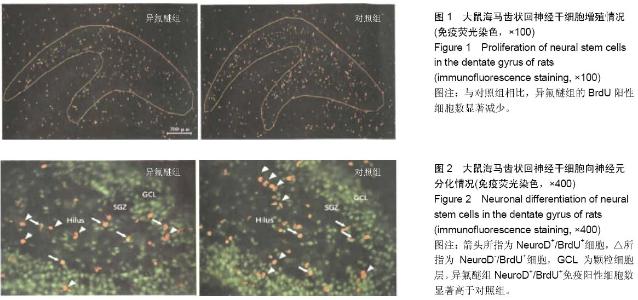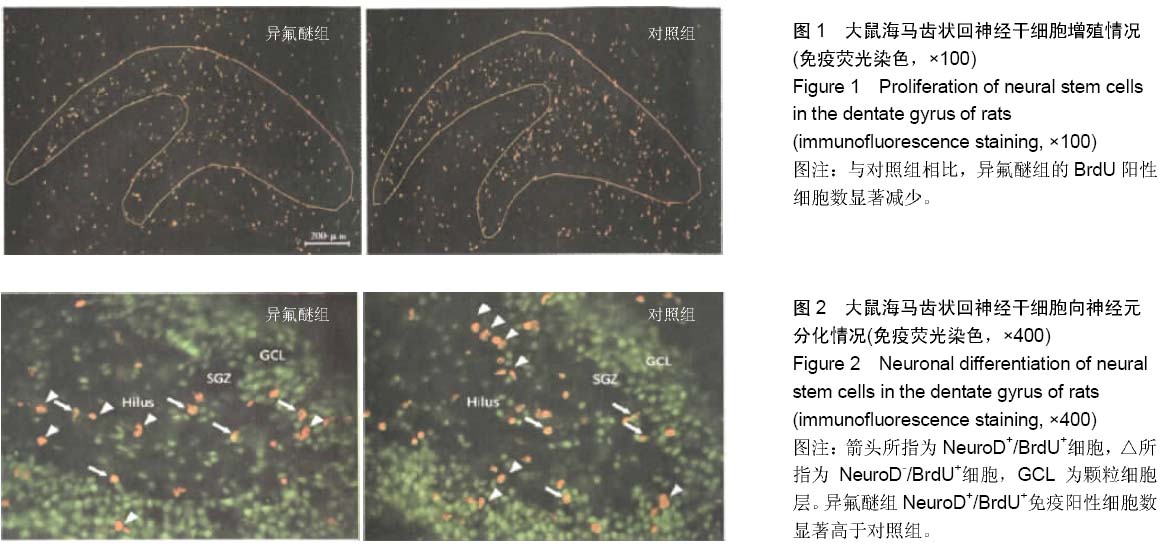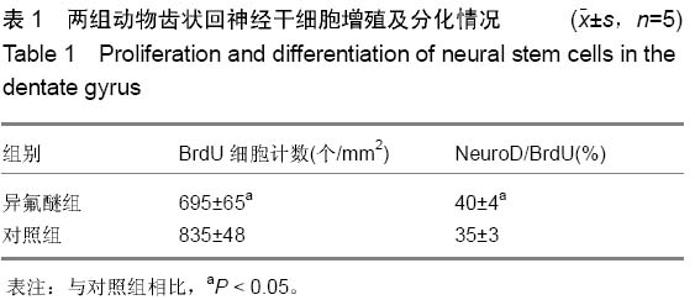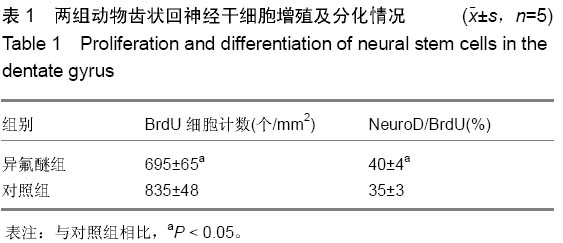| [1] 张建峰,马莉.全麻药对幼龄动物脑神经细胞凋亡的影响[J].国际麻醉学与复苏杂志,2013,34(2):171-176.
[2] 尹翠,缑灵山,孙凌燕,等.异丙酚麻醉对新生小鼠海马c-fos表达和caspase-3激活的影响[J].中华麻醉学杂志,2011,31(7): 884-886.
[3] Wang JW,Chen W,Wang YL.A ginkgo biloba extract promotes proliferation of endogenous neural stem cells in vascular dementia rats Sinensis. Neural Regen Res. 2013;8(18): 1655-1662
[4] Feng ZH,Liu J,Ju R.Hyperbaric oxygen treatment promotes neural stem cell proliferation in the subventricular zone of neonatal rats with hypoxic-ischemic brain damage. Neural Regen Res. 2013;8(13): 1220-1227
[5] 王承东,李德生,汤纯香,等.幼龄大熊猫异氟醚麻醉效果的观察[J].中国畜牧兽医,2008,35(6):106-108.
[6] 李铁军,梁敏,马飞,等.全身麻醉药对发育期大脑的毒性作用研究进展[J].海南医学,2014,25(6):857-858.
[7] 田振,周苏,张科学,等.异氟烷对幼龄小鼠生长发育趋势的影响[J].实用药物与临床,2010,13(2):81-83.
[8] 沈洁,孙震,刘海军,等.异氟醚预处理对沙士鼠脑缺血再灌注损伤的保护作用[J].中华麻醉学杂志,2006,26(3):242-245.
[9] Zhu C, Gao J, Karlsson N, et al. 1soflurane anesthesia induced persistent,progressive memory imlmirment, caused a loss of neural stem cells,and reduced neurogenesis in young,but not adult, rodents. J Cereb Blood Flow Metab. 2010;30(5):1017-1030.
[10] 徐琳,唐淑新,赵为禄,等.孕早期异氟醚麻醉对子代大鼠认知功能的影响[J].中华麻醉学杂志,2012,32(1):45-47.
[11] 张云安,李淑艳,Wong KC,等.异氟醚、七氟醚吸入麻醉对鼠骨骼肌微循环白细胞活动的影响[J].中华麻醉学杂志,2001,21(5): 310-312.
[12] 李玉娟,柳垂亮,王飞,等.异氟醚和七氟醚对新生大鼠皮质凋亡以及Akt和Bcl-xl/Bad表达的不同影响[J].中山大学学报(医学科学版),2011,32(3):291-296.
[13] 陈英圳,王寿平,王志,等.异氟醚麻醉对新生大鼠海马齿状回神经干细胞增殖及分化的影响[J].中华麻醉学杂志,2012,32(7): 839-842.
[14] 夏淑轩,李玉娟,张静,等.异氟醚和七氟醚对新生大鼠海马细胞增殖及细胞外信号调节激酶1/2表达的影响[J].中华行为医学与脑科学杂志,2013,22(4):299-302.
[15] 陈英圳,王寿平,王志,等.异氟醚对新生鼠齿状回神经前体细胞发育动力学的影响[J].岭南现代临床外科,2012,12(1):23-25.
[16] 张静.低浓度异氟醚对新生SD幼鼠海马齿状回神经发生的影响[D].中山大学,2009.
[17] 高剑峰.海马神经干细胞增生分化及影响因素[D].郑州:郑州大学,2010.
[18] Stratmann G, Sail JW, May LD, et al. Isoflurane differentially affects neurogenesis and long-term neurocognitive function in 60-day-old and 7-day-oldrats. Anesthesiology. 2009;110(4): 834-848.
[19] Stratmann G, May LD, Sall JW, et al. Effect of hypercarbia and isoflurane on brain cell death and neurocognitive dysfunction in 7-day-old rats. Anesthesiology. 2009;10(4):849-861.
[20] 樊彩兰,刘伯轩,李晶,等.BrdU体外示踪大鼠骨髓间充质干细胞的成骨分化[J].中国组织工程研究与临床康复,2009,13(27): 5309-5313.
[21] 冯进益,尤元璋,李偏,等.BrdU标记大鼠骨髓间充质干细胞增殖与成骨能力的变化[J].中国组织工程研究与临床康复,2010, 14(19):3421-3426.
[22] 崔兆辉,董海涛,姜金,等.成年大鼠脊髓损伤后内源性神经前体细胞的增殖与分化规律的研究[J].世界科技研究与发展,2014, (5):521-525.
[23] 罗时鹏,余资江,肖朝伦,等.小鼠缺血再灌注损伤后海马齿状回Wnt1、Wnt3a的表达变化[J].中国老年学杂志,2013,33(11): 2578-2581.
[24] 冯善伟,姚晓黎,李中,等.BrdU体外标记大鼠骨髓间充质干细胞的研究[J].第一军医大学学报,2005,25(2):184-186.
[25] 韩宁娟,张孝刚,杨静,等.弥漫性脑损伤大鼠皮质和海马中BrdU和Nestin蛋白的表达[J].郑州大学学报(医学版),2011,46(2): 201-204.
[26] Limas C, Bigler A, Bair R, et al. Proliferative activity of urothelial neoplasms: comparison of BrdU incorporation, Ki67 expression, and nucleolar organiser regions. J Clin Pathol. 1993;46(2):159-165.
[27] 石海杉,徐建兰,林广勇,等.11mHz超低频经颅磁刺激对局部脑缺血再灌注大鼠海马区巢蛋白、Brdu表达的影响[J].中华神经医学杂志,2014,13(11):1117-1122.
[28] 郭晶晶,单立冬,吴钢,等.BrdU免疫组织化学染色方法的改进(漂片法)[J].中国医药导报,2012,9(5):16-17, 20.
[29] Anilkumar R. Solid-phase synthesis of new ribo and deoxyribo BrdU probes for labeling and detection of nucleic acids. Tetrahedron Lett. 2008;50(7):793-795.
[30] 郑琰,席海燕,周欢敏,等.5-溴-2-脱氧尿嘧啶核苷标记内蒙古绒山羊皮肤组织的免疫组织化学检测[J].中国畜牧兽医,2009,36(4): 28-31.
[31] 周文柏,刘佳,韩晓,等.NeuroD腺病毒载体的构建以及在小鼠胰岛β细胞中的过表达[J].医学分子生物学杂志,2013,10(2): 69-72.
[32] 郭玮,刘晓艳,柯荔宁,等.RT-PCR法检测神经源性分化因子mRNA在大鼠脑发育过程中的表达[J].解剖学报,2014,45(1): 26-30.
[33] 王洋,陈颖,高莉,等.神经源性分化蛋白在胰腺癌中的表达和意义[J].中华病理学杂志,2012,41(1):23-27.
[34] 孙卫华,李果,姜正文,等.2型糖尿病侯选基因Neurod 1、Neurod 4和GPD 2的突变检测[J].上海第二医科大学学报,2004,24(2): 101-104.
[35] LoTurco JJ, Owens DF, Heath MJ, et al. GABA and glalamate depolarize cortical progenitor cells and inhibit DNA synthesis. Neuron. 1995;15(6):1287-1298.
[36] 方洪波,张业,沈珝琲,等.NeuroD在神经细胞分化中的调控作用[J].医学分子生物学杂志,2008,5(3):278-281.
[37] Liu WD,Wang HW,Muguira M, et al.INSM1 functions as a transcriptional repressor of the neuroD/beta 2 gene through the recruitment of cyclin D1 and histone deacetylases. Biochem J. 2006;397(1):169-177.
[38] 柳垂亮,李玉娟,陈郡兴,等.异氟醚对老年小鼠空间参考记忆和脑细胞凋亡及Caspase-3表达的影响[J].中华行为医学与脑科学杂志,2010,19(2):108-111.
[39] 王洋.神经源性分化蛋白NeuroD在胰腺癌中的表达及功能研究[D].上海:第二军医大学,2012.
[40] Sall JW, Stratmann G, Leong J, el al. Isoflurane inhibits growth but does not cause cell death in hippocampal neural precursor cells grown in culture. Anesthesiology. 2009;110(4): 826-833. |



